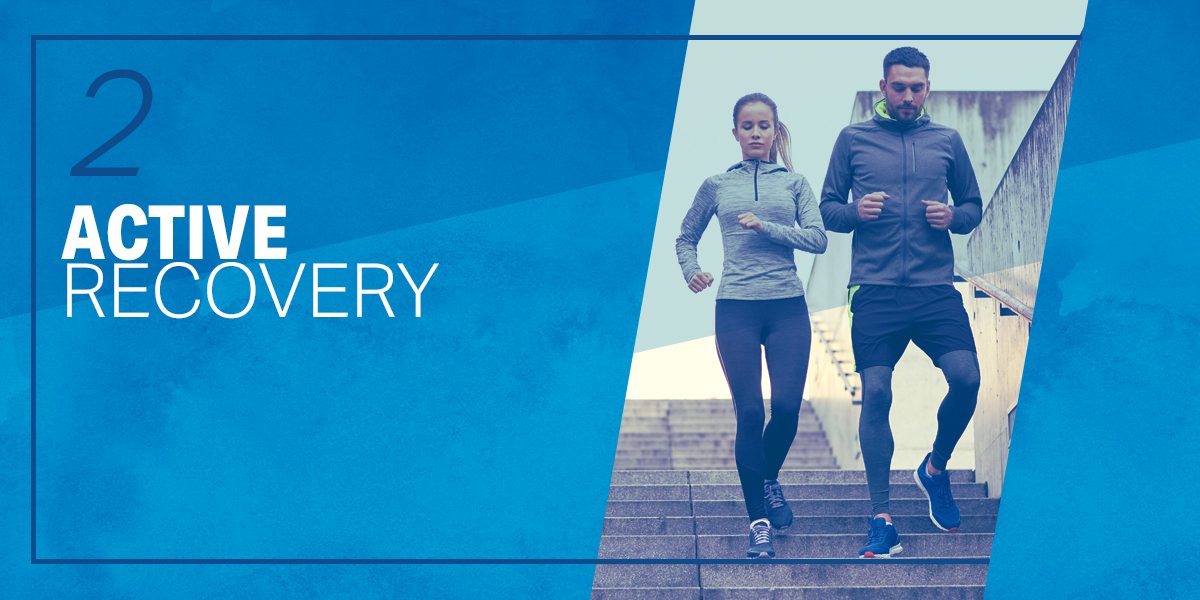You just crushed a killer workout and couldn’t be more proud of yourself. Your head hits the pillow and you smile as you drift off to sleep, knowing you’re one step closer to your goals.
Then, the next morning, you roll out of bed. Your feet hit the floor and bam! You feel like you’ve been hit by a bus. Your legs are heavy, your abs are throbbing and you can barely lift your arms. Hello, delayed-onset muscle soreness (DOMS).
You can hardly move, so you’d better skip today’s workout, right? Not so fast. There’s no need to skip the gym just because you’re sore. In fact, there are a handful of things you can do in the gym that will make you feel better. So before you plop your aching bones on the couch, let’s uncover why you get sore and offer some proactive recovery methods.
WHY DO WE GET SORE?
Your muscles get sore for multiple reasons. When you exercise, you create stress on your body’s tissues, including the muscles, tendons, ligaments and bones. Most exercises involve eccentric stress, which means your muscles contract in a lengthened state. Imagine lowering the bar toward your chest on a bench press or your legs absorbing the landing on each stride while running; these involve eccentric muscle actions.
This causes microscopic tears in your muscle fibers as well as a small amount of inflammation, leading to DOMS. Soreness tends to be worse when you haven’t worked out in a while or you try new exercises. Either way, it’s no fun, but there’s plenty you can do to make yourself feel better.
3 WAYS TO REDUCE SORENESS

Studies suggest that foam rolling before and/or after a workout can help reduce muscle soreness. Researchers theorize that foam rolling increases blood flow, reduces muscle tension and improves range of motion, all of which can help you feel and move better.
READ MORE > 3 AREAS YOU’VE NEVER ROLLED – BUT SHOULD!
There are no firm conclusions about how much to foam roll, but many studies suggest that 30–60 seconds per muscle group may be enough to reduce soreness. Daily foam rolling also seems to be more effective than infrequent rolling, so do a little bit every day to feel better and stay limber.

Sure, DOMS makes it uncomfortable to move, but if you can muster the courage to get moving, light exercise can make you feel better. It sounds counterintuitive, but it works.
Research suggests active recovery (such as light jogging, strength training or mobility exercises) is superior to stretching when it comes to recovery. In fact, further studies show stretching actually does very little to reduce DOMS. So even if you’re tempted to skip the gym because you’re sore, just get there and start warming up. It’s likely that after a few minutes, you’ll feel better and will be able to perform your workout as planned.

Nutrition plays a huge role in any fitness goal. That’s probably why you came to MyFitnessPal in the first place! The right post-workout nutrition can reduce DOMS and get you feeling normal again.
Protein is the building block of muscles and studies show consuming whey protein after working out can help your muscles recover faster. That’s because whey protein ramps up muscle protein synthesis, which means your body gets to work faster to rebuild all the tissue you broke down while exercising.
How much protein do you need? The general consensus is athletes and active individuals need about 0.68–1 gram per pound of bodyweight per day. A post-workout drink that contains 20 or more grams of protein as part of a balanced diet should do the trick.
READ MORE > WHAT THE IDEAL AMOUNT OF PROTEIN LOOKS LIKE
A more recent study suggests that adding antioxidants to your post-workout meal can help you recover faster than you would by using whey protein alone, so try eating antioxidant-rich foods such as blueberries, cranberries or raspberries after your workout.
STOP THE SORENESS
Don’t let DOMS stop you in your tracks. Take the initiative to reduce soreness and stay on the path toward your fitness goals.




